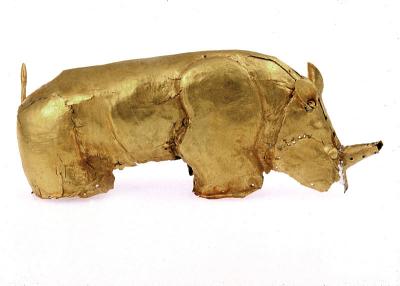South Africa lost 1,028 rhinos to poachers in 2017
Although rhino horn has been banned for 25 years as a traditional medicine in China, consumption has surged recently there and in Vietnam, where it is promoted as a purported cancer cure, general health tonic and hangover cure. Primarily composed of keratin, the same protein found in human hair and fingernails, rhino horn has no unique medicinal properties. WildAid works to raise awareness in Vietnam and China of the rhino poaching crisis, support the strengthening of enforcement efforts, and to reduce demand for rhino horn.
9%
Only 9% of survey respondents in Vietnam now believe that rhino horn can cure cancer, a 73% decrease since our campaign began in 2014.
100
The number of top Vietnamese CEOs that signed WildAid’s pledge never to buy, use or sell rhino horn.
-50%
Wholesale rhino horn prices in Vietnam and China declined by half between 2013 and 2015.
Making an impact
In the past 40 years, the world has lost 95% of its rhinos. Although poaching has declined slightly in recent years, far too many rhinos are still killed for their horns. To address demand for rhino horn, WildAid campaigns to debunk the myths about rhino horn’s curative properties. In partnership with the Ho Chi Minh City Health Department, we have produced messages with traditional medicine doctors speaking out against the use of rhino horn. We brought campaign ambassadors on trips to Kenya to learn about the threats facing rhinos and to meet the world’s last remaining northern white rhinos as part of TV programs to raise broader awareness. Additionally, 100 top Vietnamese CEOs have signed our pledge never to buy, use or sell rhino horn
Working with influential public figures in Vietnam and China, and in partnership with the African Wildlife Foundation, we are raising public awareness about the realities of rhino horn. Our 2016 survey in Vietnam found a 67% decline from 2014 in the number of people who believe that rhino horn has medicinal effects.
Knowledge that rhino horn is composed of substances found in hair and fingernails increased drastically by 258% from 19% in 2014 to 68% in 2016. Over half of the respondents said they’d heard rhino protection messages in the past year and 99% agree that the messages are useful and discourage people from purchasing rhino horn.
In Zimbabwe, under the banner of "poaching steals from us all," television personality Rumbizai Takawira has helped WildAid highlight the plight of rhinos and their importance to the environment and tourism industry. Partnering with local conservancy groups in the Savé Valley and Imire, near Harare, WildAid has supported anti-poaching efforts, breeding, research and rewilding programs. In Mozambique, WildAid worked with former President Joaquim Chissano to develop anti-poaching messaging.
Rhino facts
- In 2011, the western black rhino was declared extinct. The northern white rhino is also teetering on the brink of extinction, with just two females living under constant guard in Kenya’s Ol Pejeta Conservancy.
- There are five species of rhino, three of which are critically endangered: the black rhino found in Africa, and the Javan and Sumatran rhinos found in Indonesia. But conservation efforts have brought the Greater one-horned (or Indian) rhino back from the brink of extinction, with around 3,700 now living in northern India and Nepal’s southern grasslands.
- Africa’s two species, the black and white rhino, are both grey. The name of the white rhino is thought to have come from the Afrikaans word “wyd” or wide, describing their square upper lip, misheard by early English settlers, who then named the other species black rhinos to differentiate them. Black rhinos have pointed upper lips allowing them to feed on trees and shrubs, whereas white rhinos graze on grass.
- Rhinos have very poor eyesight, relying more on their sense of smell. They love rolling around in the mud, which helps them stay cool and ward off biting insects and parasites.
- White rhinos are the largest, weighing up to three and a half tonnes.
- Black and white rhinos, as well as Sumatran rhinos, have two horns, whereas Javan and greater one-horned rhinos have just the one.
Rhinos in African culture

The golden rhinoceros of Mapungubwe, a small wooden animal covered in gold dating back a thousand years, was discovered in 1932 in a royal grave in modern-day South Africa.
It is the first sign of a class-based society in southern Africa, but also a clear indication of the rhino’s association with sacred leadership. The rhino’s qualities, its danger, aggression, power and perhaps unpredictability were seen as qualities that tribal chieftains wanted to project.
But why is the rhino apparently so often in a bad mood? One African folktale suggests he’s jealous of his friend, the giraffe. During a terrible drought, the grass became parched and bitter and the giraffe, which had a normal neck, was always trying to reach for the higher, fresh, green leaves on the bushes and trees. The rhino would laugh at his friend’s futile attempts -- until an old man fed the giraffe a special herb that allowed his neck to grow. The giraffe had the last laugh, and the rhino is still grumpy about it to this day.


